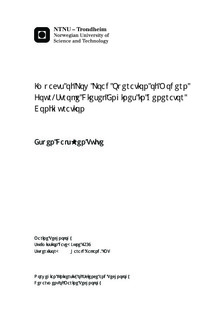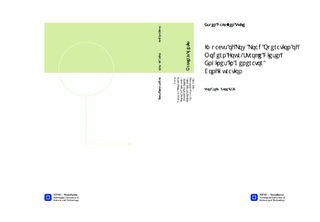| dc.description.abstract | Diesel engines in generator configuration are normally optimized for operations at medium to high engine loads. It is suspected that operations at low loads may increase operational problems and thus the damage frequency. It is also suspected that negative effects off low load operations are aggravated by recent exhaust emission regulations issued by IMO. This thesis describes an investigation of the impacts of low load operations on modern four-stroke diesel engines in generator configuration. The problem has been approached by reviewing existing literature, studying damage cases, analysis of existing finding data and by assessing engine manufacturers experiences with low load operations.Low load operations of diesel engines are defined as engine operations below 40% of maximum continuous rating. Low load operations are typical for, but not limited to, offshore vessels with dynamic positioning systems. Low load operations of diesel engines cause lower cylinder pressure and thus lower temperature. Low temperature can lead to ignition problems and poor combustion which causes increased soot formation and aggregation of unburned fuel in the cylinder. Low cylinder pressure, soot and unburned fuel deteriorate the piston ring sealing efficiency allowing hot combustion gases, soot particles and unburned fuel to leak past the piston rings. This results in increased lubricating oil consumption and dilution. Fuel dilution of the lubricating oil reduces the viscosity which can collapse critical oil film thicknesses. This can cause premature wear of pistons, rings, liners and crank case bearings. The mechanisms of low load lead to a cycle of degradation which means that diesel engines that run at low loads for longer periods of time can become irreversibly damaged. This is illustrated in this paper by an engine damage case. The damage case presents an engine crankcase breakage initially caused by piston scuffing from lubrication oil breakdown after excessive low load operations. Most modern diesel engines operate at lower cylinder pressure and thus lower temperatures to comply with stringent IMO NOX emission requirements. The IMO Tier I and II standards are met by primary measures which aim at reducing the amount of NOX formed during combustion by optimizing certain engine parameters. Modern NOX optimized engines are more exposed to low load operations than their predecessors due to initially lower cylinder pressures and temperatures. However, recent developments such as common rail, variable injection timing and variable valve control permit engine operations at lower loads than earlier. Existing finding data from DNV GL s database have been analysed to determine whether one can substantiate the impacts of low load operations quantitatively. The finding data have been analysed by simple frequency measurements. The results show higher finding frequencies for DP-vessels than non-DP vessels, which could indicate that low load operations may have a negative impact on the operational problems and thus the damage frequency. The finding data have also been evaluated with respect to time to determine whether NOX optimization aggravates the negative impacts of low load operations. The result showed generally higher finding frequencies for engines installed after 2000 than the ones installed prior to 2000. This could indicate that the introduction of Tier I compliant engines have increased operational problems. However, it could not be determined whether NOX optimized engines have aggravated the negative impacts of low load operations. Engine manufacturers that have been interviewed agree that low load operations affect the engine operation negatively, but they do not want confirm that low load operation increases the engine damage frequency. It is consensus among the engine manufacturers that the engines must be loaded to at least 50% of rated power regularly during low load operations to prevent operational problems. The time interval and load requirements can vary from one engine to another and depending on the engine design. | nb_NO |

